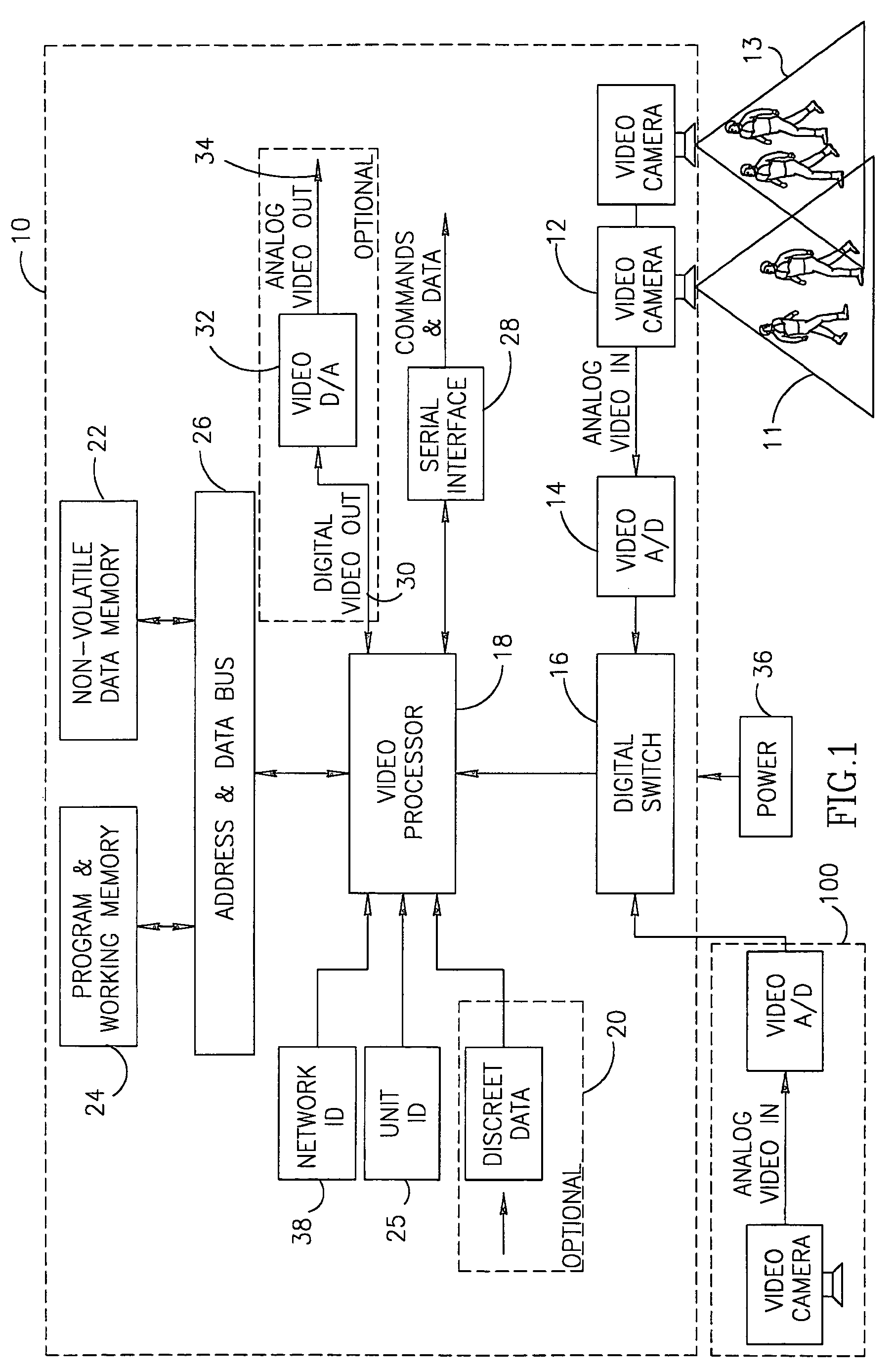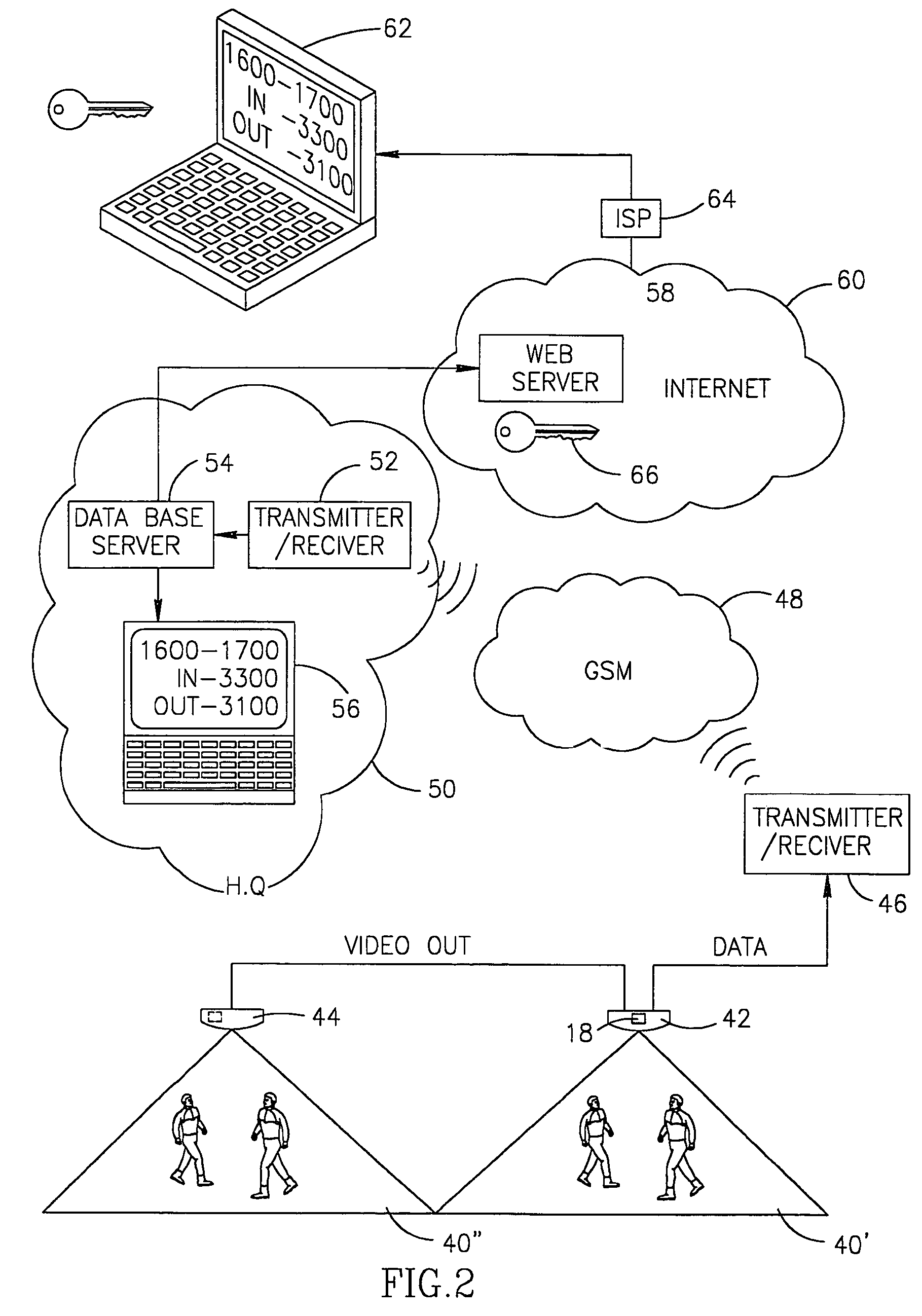Video-based system and method for counting persons traversing areas being monitored
a video-based system and counting system technology, applied in the field of video image processing, can solve the problems of low correlation level between, danger of losing the positive identification of figures, and low area, and achieve the effect of convenient installation and standalon
- Summary
- Abstract
- Description
- Claims
- Application Information
AI Technical Summary
Benefits of technology
Problems solved by technology
Method used
Image
Examples
Embodiment Construction
[0051]Reference is now made to FIG. 1, which is a schematic block diagram illustration of a stand alone end unit, generally designated 10, constructed and operative in accordance with a preferred embodiment of the present invention.
[0052]In accordance with an embodiment of the invention, the stand alone end unit 10 comprises two CCD type video cameras 12′ and 12″ and an A / D converter 14 for converting the analog information from the cameras to digital information. A digital switching unit 16, connects the A / D converter 14 to a video processor 18, for transferring the digital video information to the video processor 18. In some embodiments, cameras 12′ and 12″ may be positioned for example perpendicular or at other angles to each other within end unit 10 such that one such camera 12′ may capture images of for example an entryway / egress route 11 into for example a store or other space, and a second camera 12″ may capture images of a passerby route 13 that may be for example in front o...
PUM
 Login to View More
Login to View More Abstract
Description
Claims
Application Information
 Login to View More
Login to View More - R&D
- Intellectual Property
- Life Sciences
- Materials
- Tech Scout
- Unparalleled Data Quality
- Higher Quality Content
- 60% Fewer Hallucinations
Browse by: Latest US Patents, China's latest patents, Technical Efficacy Thesaurus, Application Domain, Technology Topic, Popular Technical Reports.
© 2025 PatSnap. All rights reserved.Legal|Privacy policy|Modern Slavery Act Transparency Statement|Sitemap|About US| Contact US: help@patsnap.com



